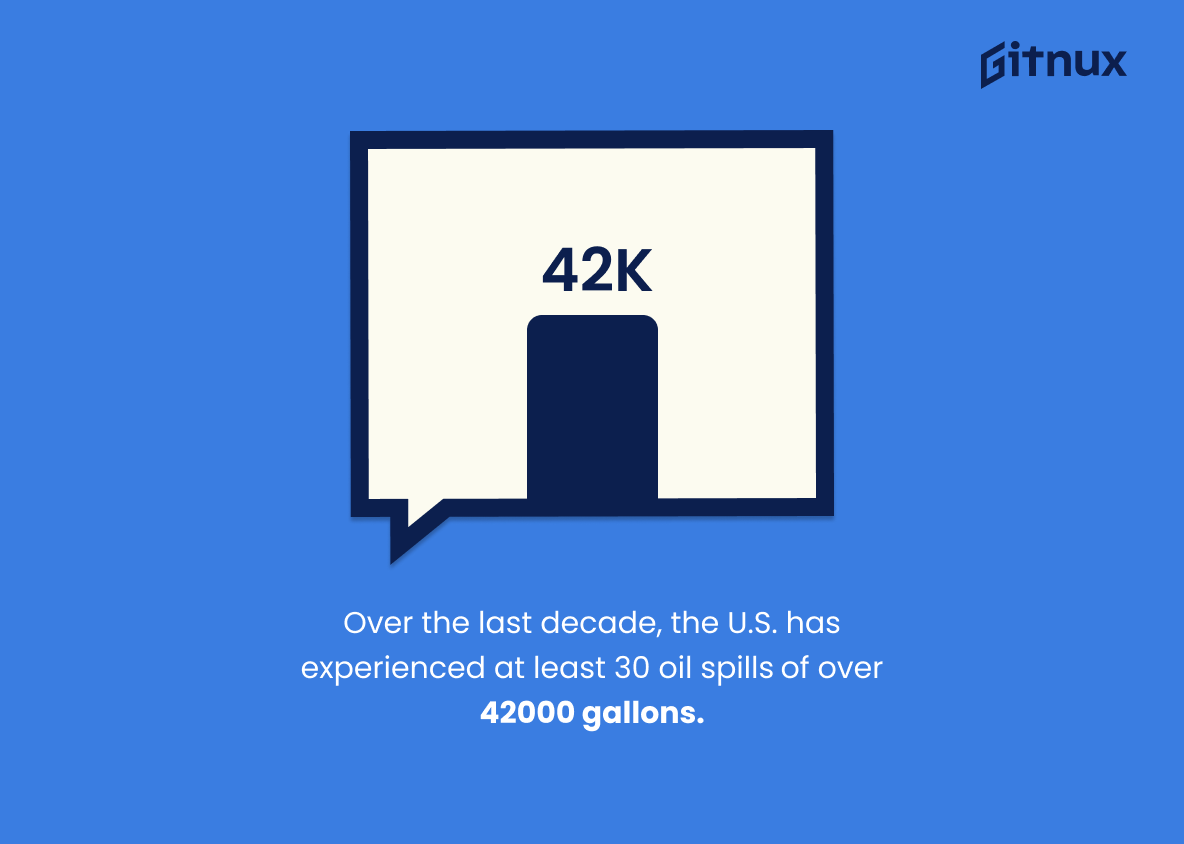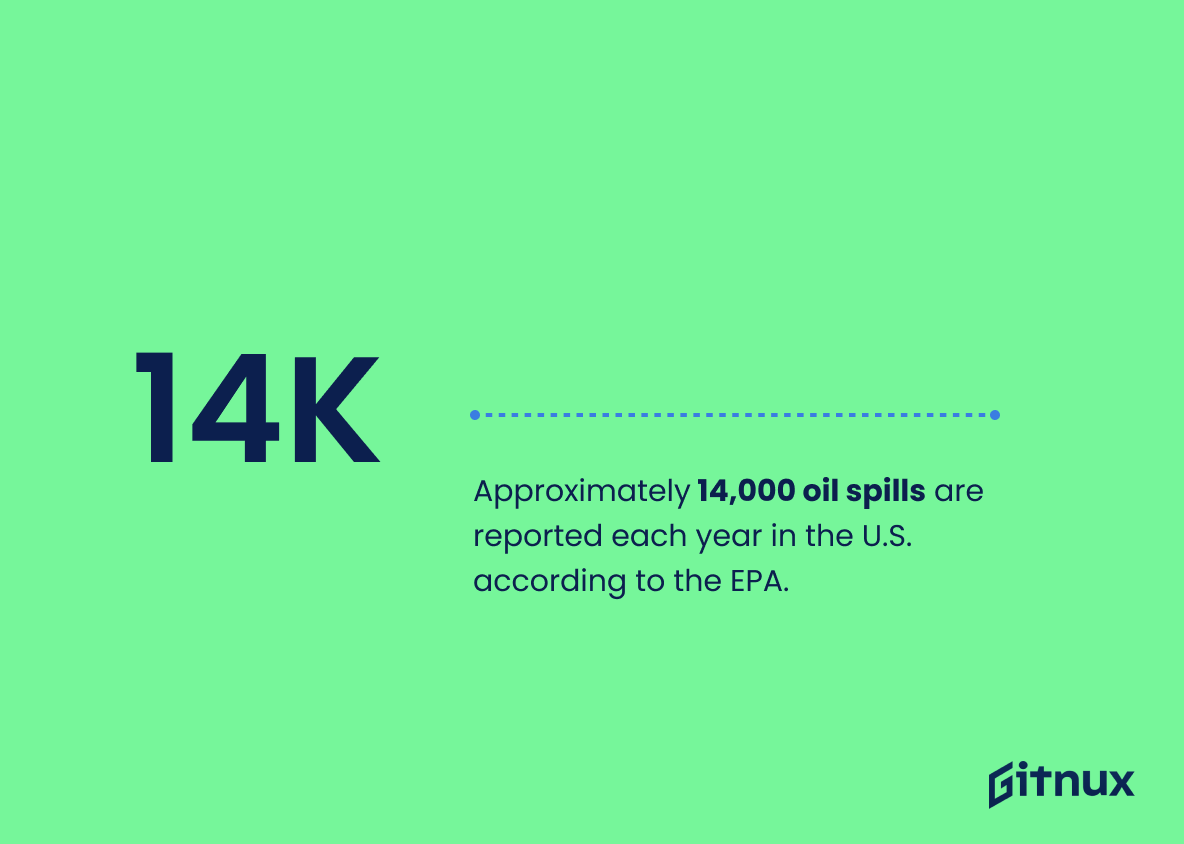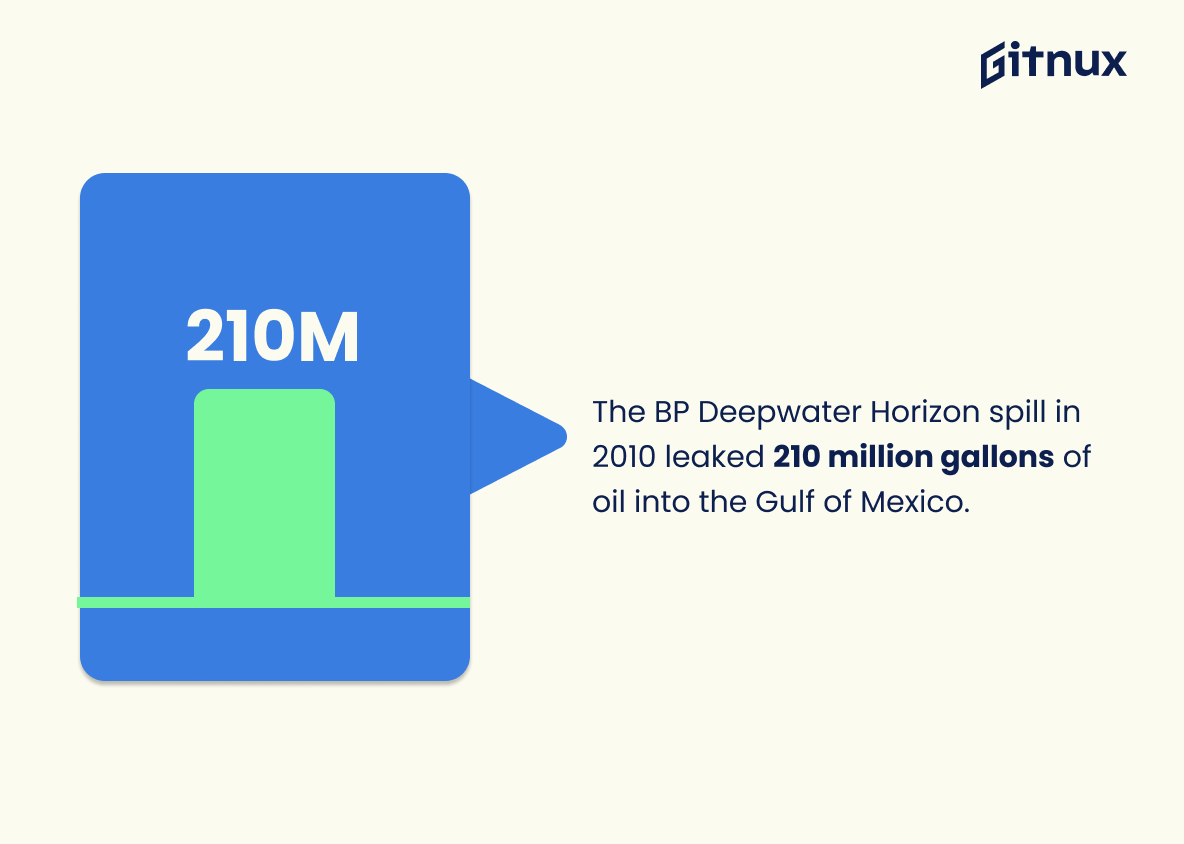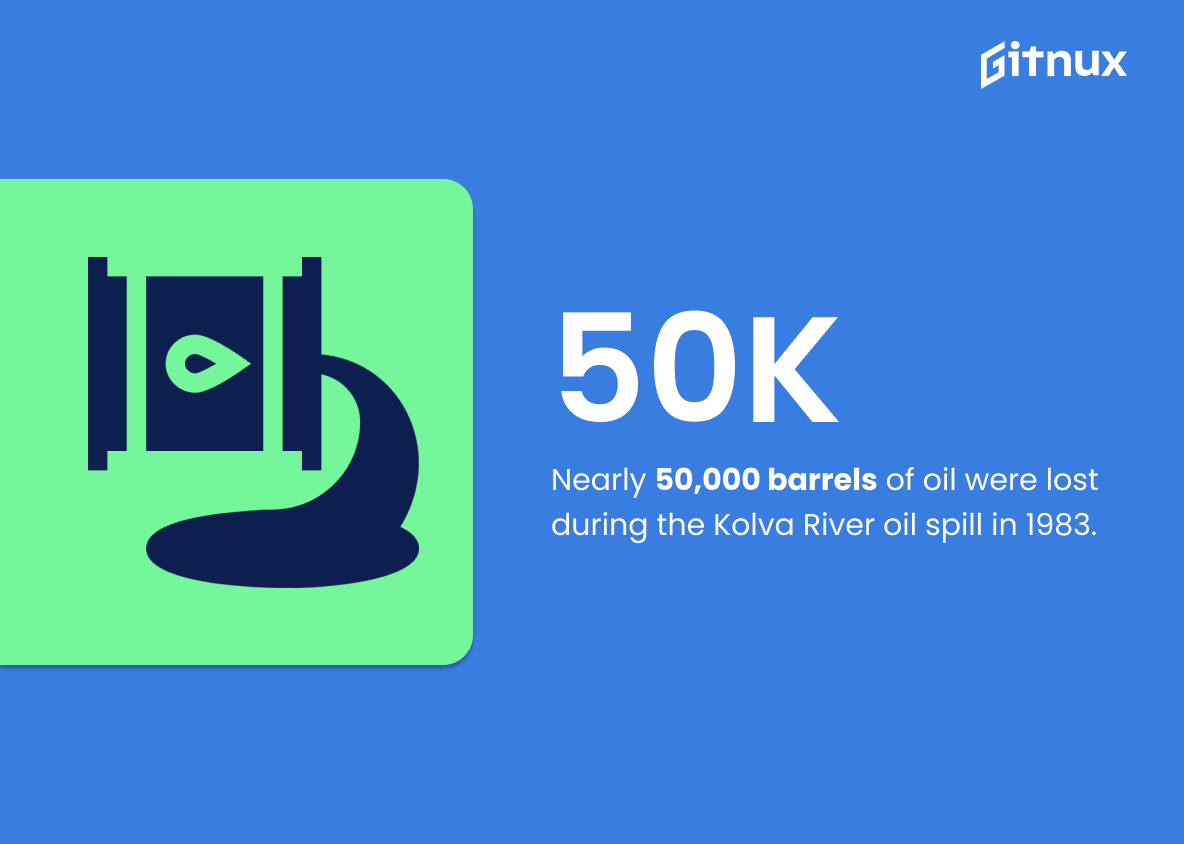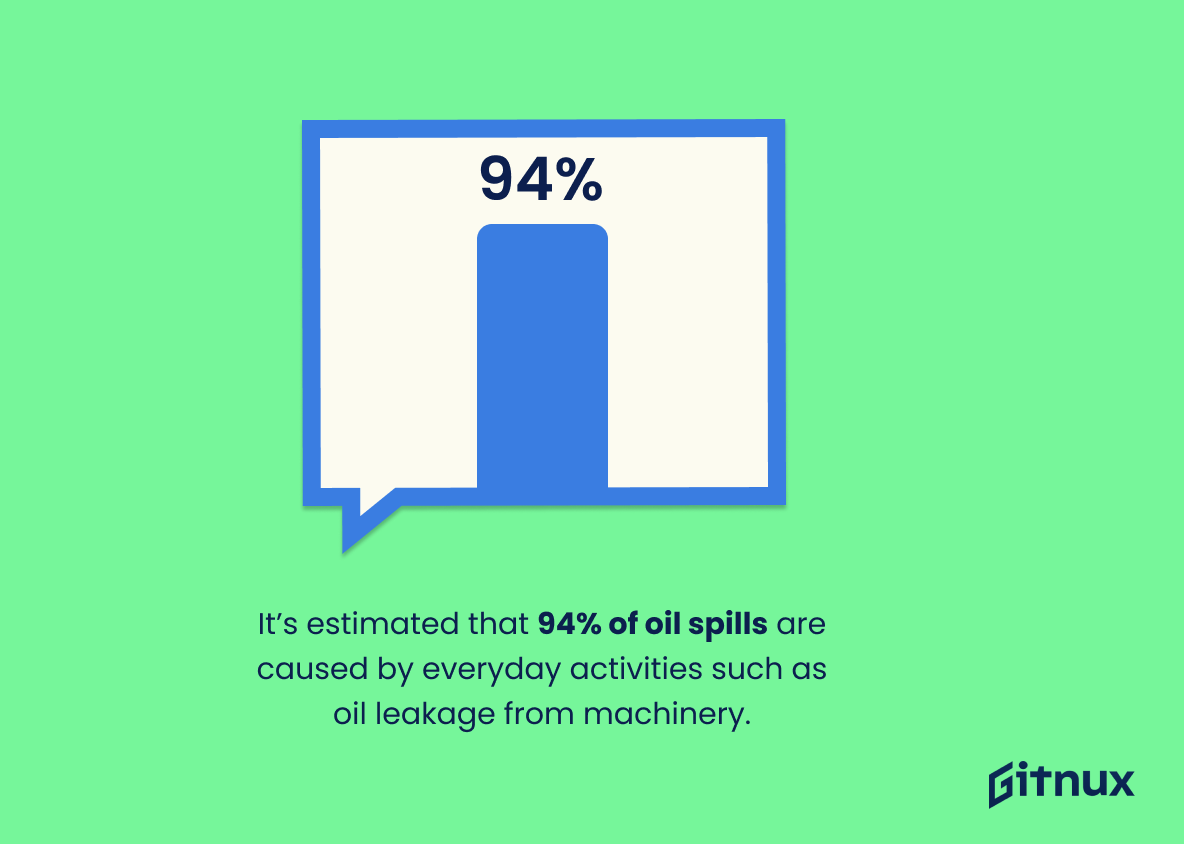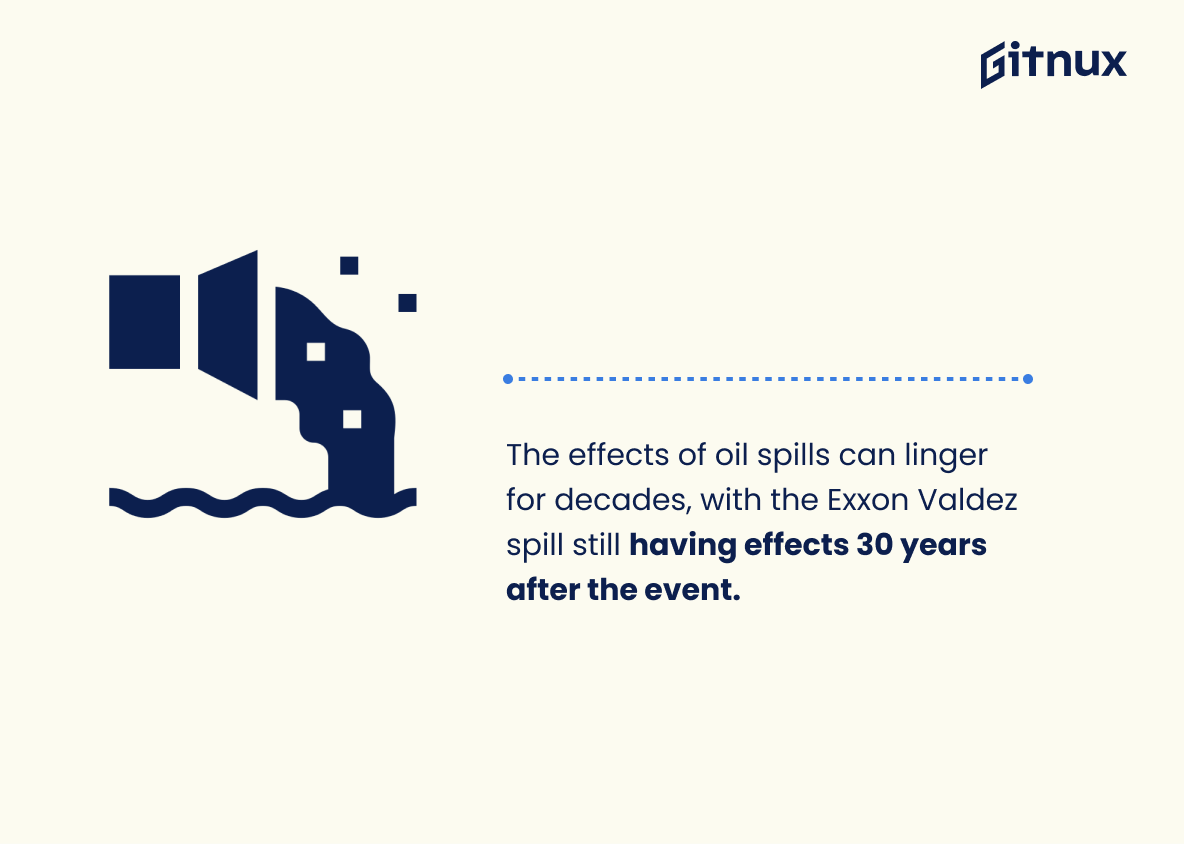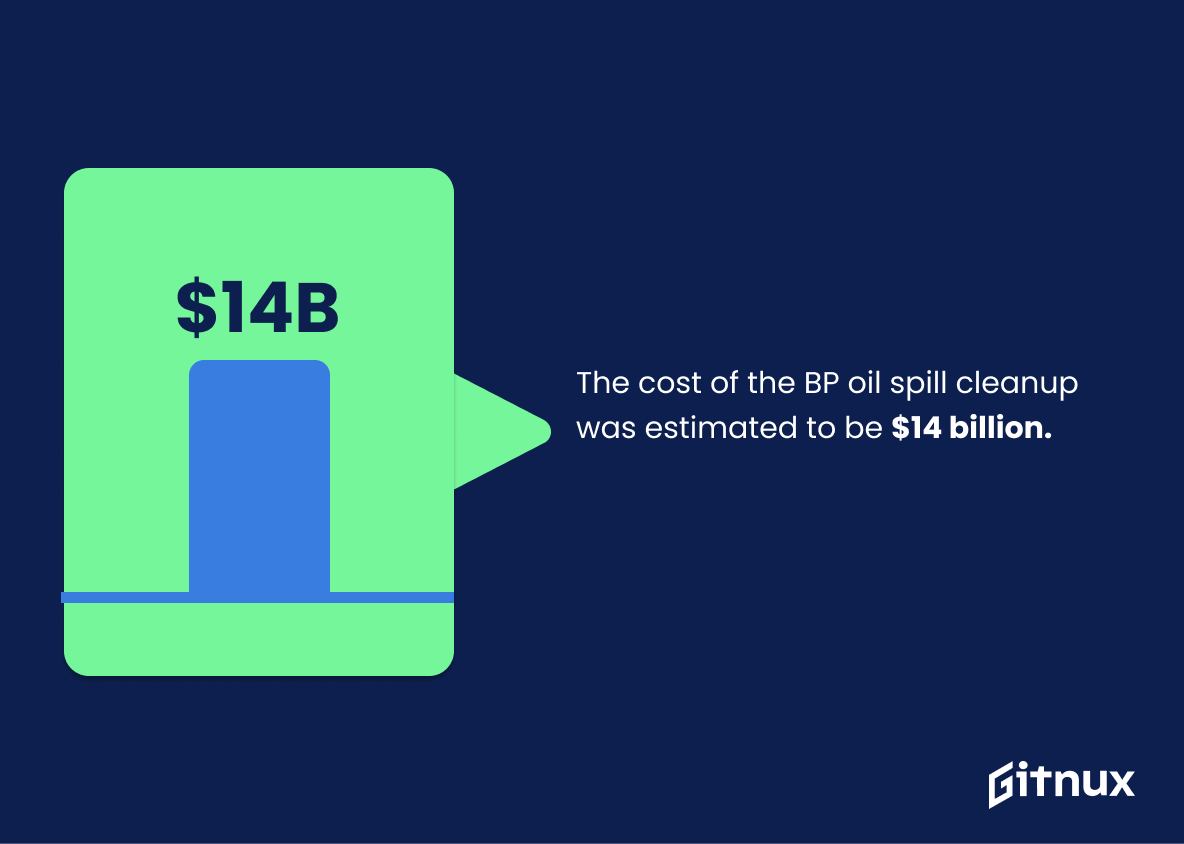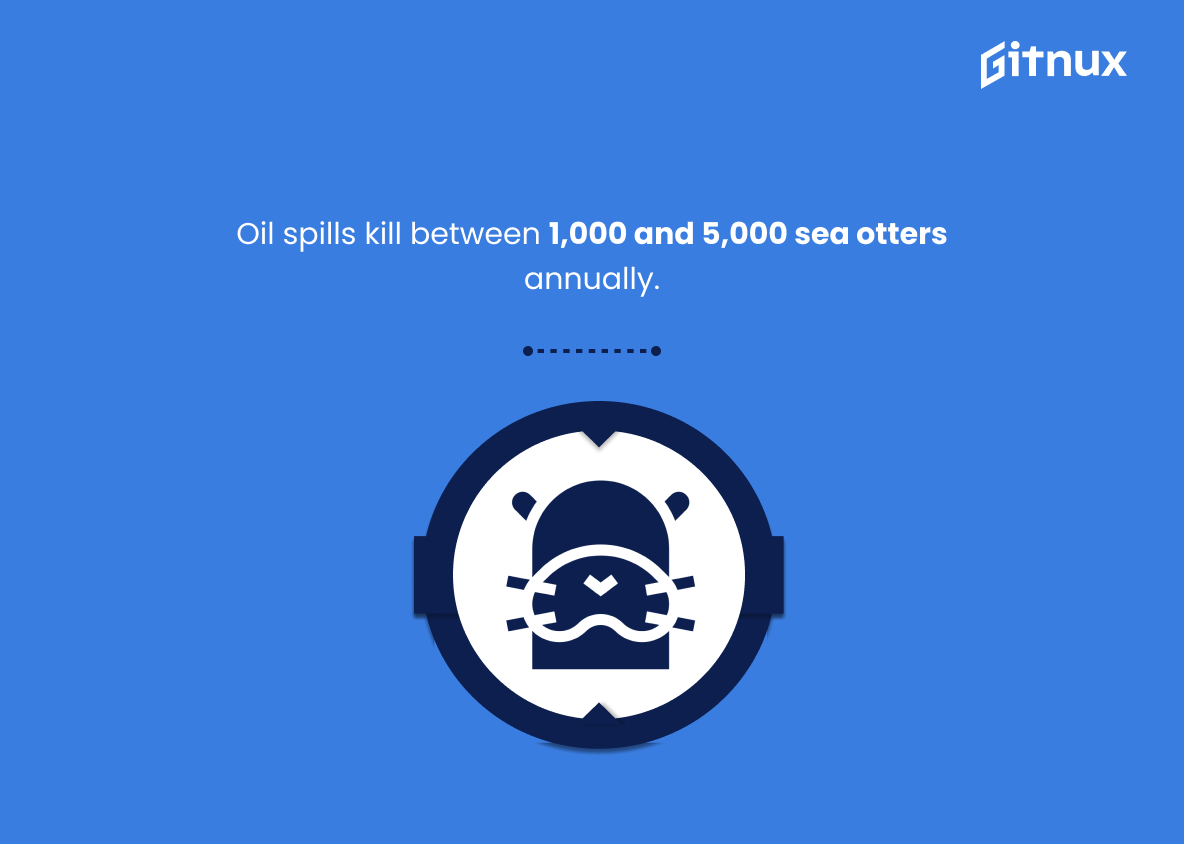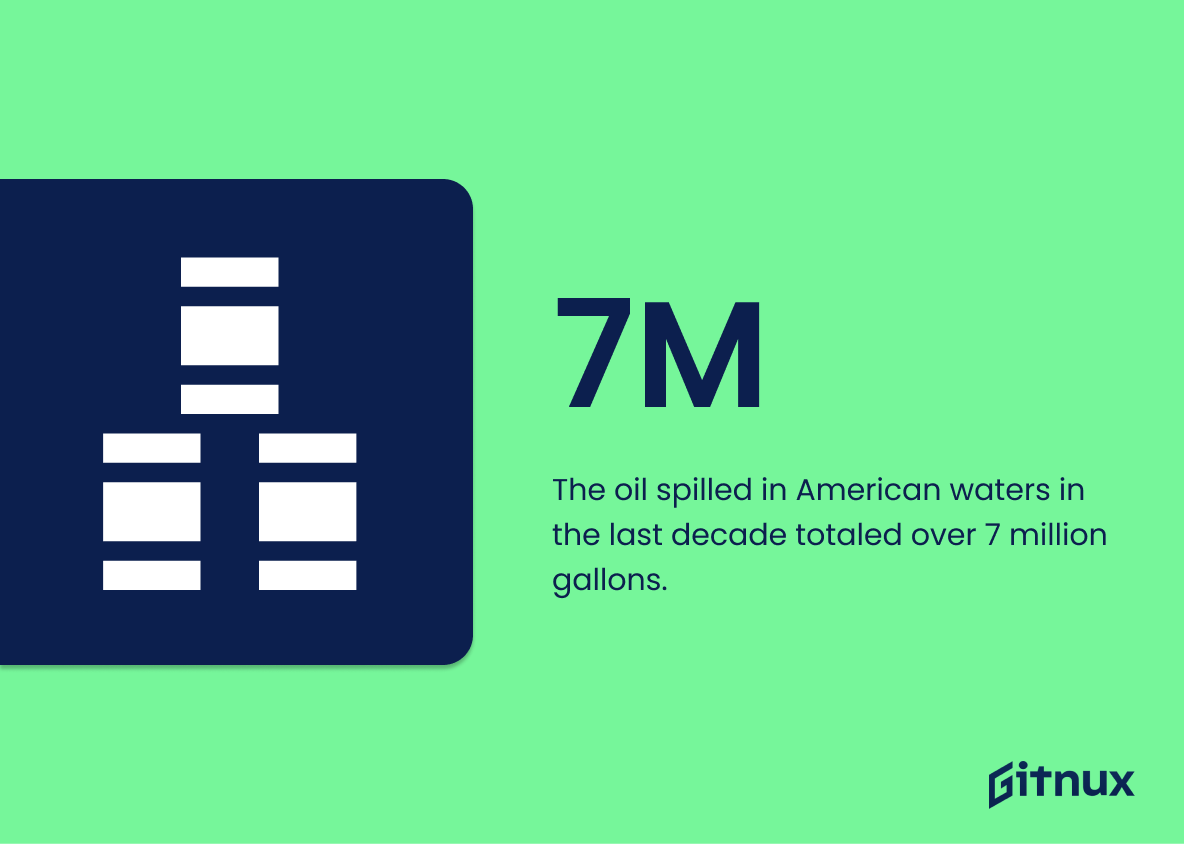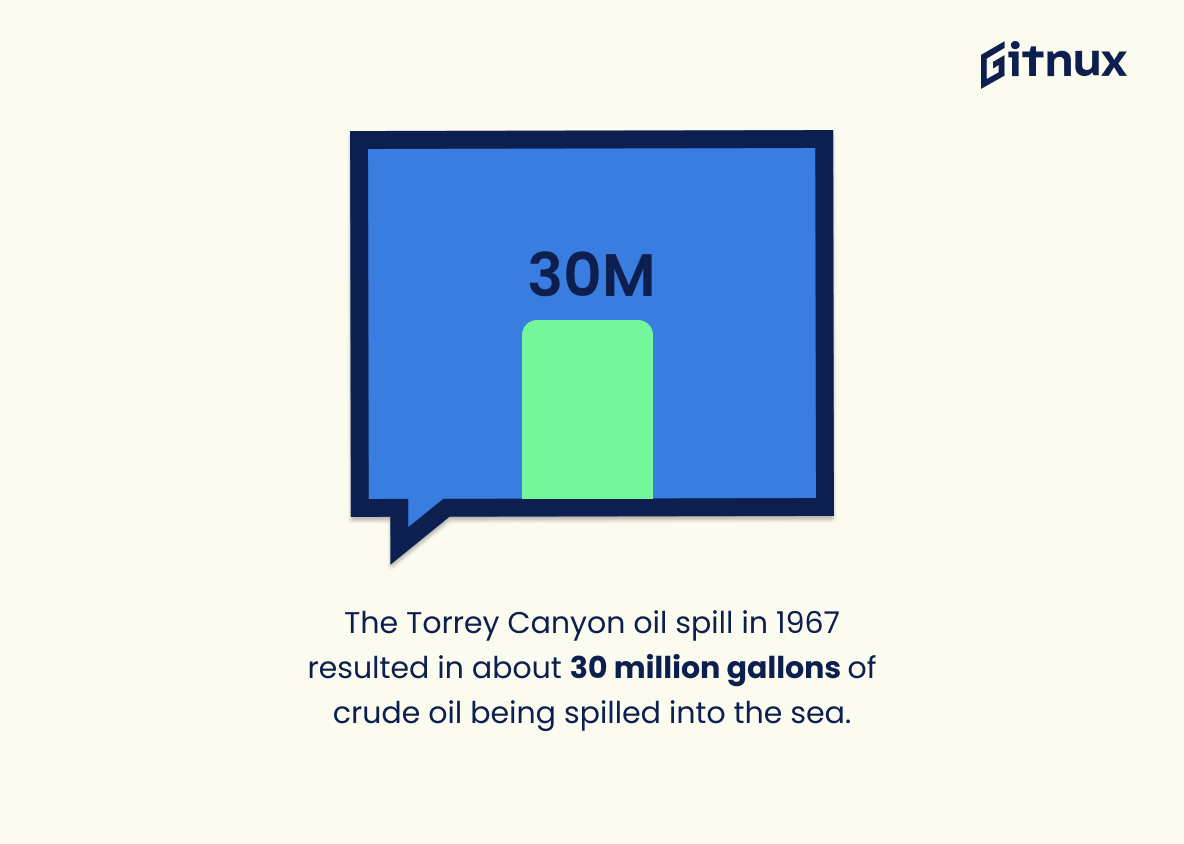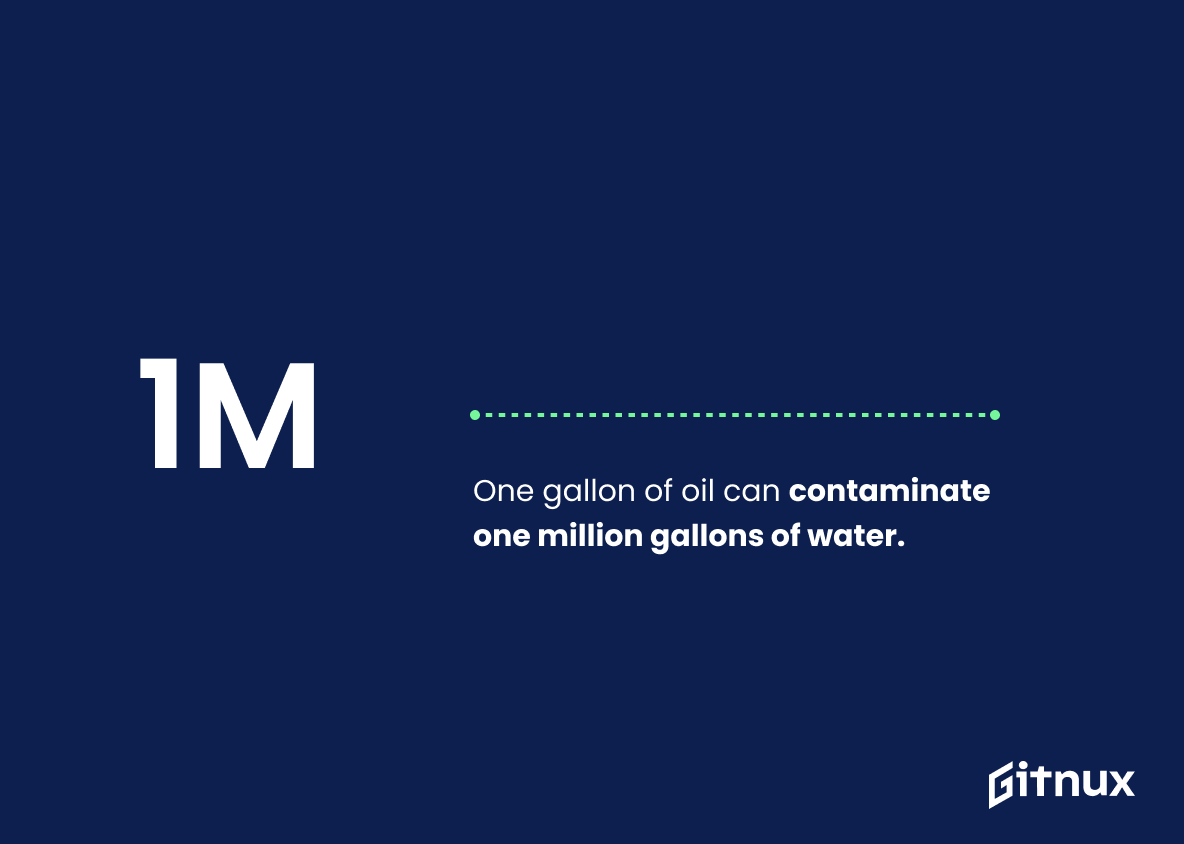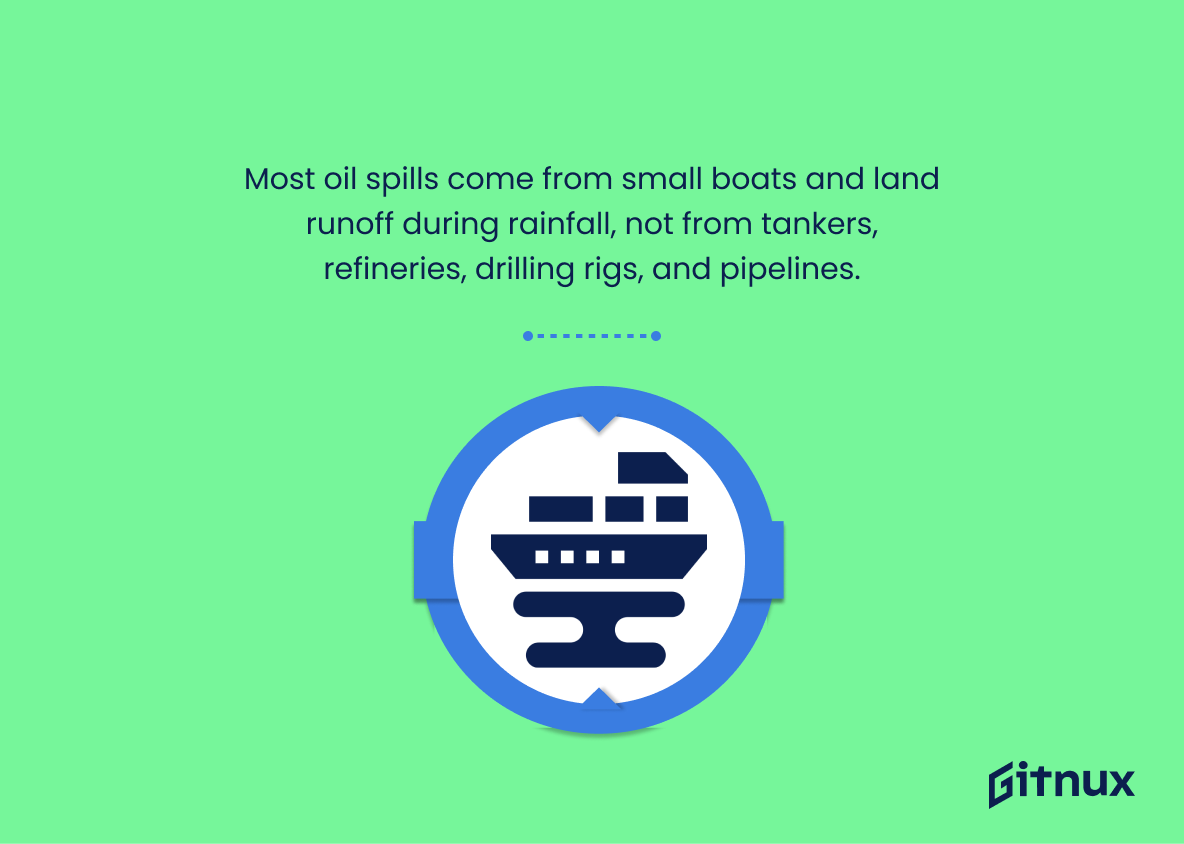As our world grows increasingly reliant on fossil fuels, the specter of oil spills looms large, posing a significant threat to both our environment and economy. It’s a disturbingly common problem that has led to catastrophic consequences on numerous occasions. The pertinence of understanding oil spill statistics cannot be understated, given its impact on our lives and the planet’s health. This blog post aims to shed light on the vital facts and figures surrounding oil spills, illuminating both their frequency and their far-reaching effects, while highlighting the urgency for substantial preventative measures and swift response actions. Join us as we navigate the murky waters of oil spill statistics, a crucial step towards appreciating and addressing this grave environmental issue.
The Latest Oil Spill Statistics Unveiled
More than 1.3 million gallons of oil is spilled into the ocean every year due to oil shipping alone.
The stated statistic paints a poignant picture of the seemingly relentless assault on our world’s oceans. Imagine, if you will, over 1.3 million gallons of oil polluting the seas annually due to oil shipping alone – this chilling revelation underscored in a blog post regarding Oil Spill Statistics. These numbers serve as a sobering wakeup call, shedding light on the potentially irreversible impact of oil spills on marine ecology and biodiversity. Moreover, it underlines the urgency for more robust measures towards prevention, mitigation and more efficient response methods. It’s like a silent clock, loudly ticking, marking the steady loss of an integral part of our ecosystem triggered by our constant reliance on oil.
Over the last decade, the U.S. has experienced at least 30 oil spills of over 42000 gallons.
Delving into the realm of oil spill incidents over the last decade, the U.S. has confronted a staggering 30 occasions where more than 42,000 gallons were spilled. This revelation underscores the disturbing regularity of these unfortunate incidents and the immense volumes involved. This number speaks volumes in a blog post on Oil Spill Statistics, offering readers more than just the cold hard figures. It evokes a narrative of environmental threats and crucial need for oil spill prevention measures. It drives discussions on legislation, accountability, and mitigation efforts. Therefore, it’s more than just a statistic, it sets the stage for a comprehensive understanding of the oil spill conundrum we face today.
Approximately 14,000 oil spills are reported each year in the U.S. according to the EPA.
Revealing that, as per the EPA, the U.S sees an astonishing 14,000 oil spills annually immediately underscores the magnitude of this environmental issue. This number, standing tall and resolute, resonates a somber song of environmental distress. It regrettably illuminates the frequency of such events, which may otherwise escape our awareness. Approaching it from a different perspective, it also speaks volumes about the relevance of stringent measures, technological advancements in prevention and urgent need for relentless efforts towards containment and clean-up efforts. Your future blog readers will need to grasp the enormity of this reality to fully appreciate the content and discussions on Oil Spill Statistics.
The BP Deepwater Horizon spill in 2010 leaked 210 million gallons of oil into the Gulf of Mexico.
Immerse your thoughts into the magnitude of the BP Deepwater Horizon spill in 2010, an environmental catastrophe that poured an alarming 210 million gallons of oil into the Gulf of Mexico. Astounding, isn’t it? Now consider that in the context of oil spill statistics. This staggering number is not merely a piece of trivia but exemplifies the extreme potential of environmental degradation linked to oil spills. It dramatically underscores the need for improved safety standards, technological enhancements in oil extraction and transportation, and more responsible energy practices. Undeniably, this chilling statistical revelation forms a crucial pillar in the edifice of our understanding of oil spills and their consequences
The Exxon Valdez oil spill totaled an estimated 11 million gallons.
Emphasizing the enormity of the Exxon Valdez catastrophe, the staggering estimate of 11 million gallons of oil spilled paints a grim portrait of one of the most severe environmental disasters in history. This figure propels our understanding of oil spill stats onto an entirely new level.
This catastrophic event serves as a potent reminder, an alarming wake-up call to the magnitude of damage human activity can inflict on our ecosystems. Oil spill statistics aren’t just abstract numbers but represent tangible, often destructible events that can leave profound and lasting impressions on our environment.
From a blogger’s perspective, such a hard-hitting statistic works to underscore the narrative of the perils of oil spills, adding substantial weight to the discourse, captivating audiences, and advocating for greater responsibility towards our planet. By putting forth this level of devastation, readers gain a more profound understanding of why proactive measures are critical in preventing such disasters in the future.
Nearly 50,000 barrels of oil were lost during the Kolva River oil spill in 1983.
The gargantuan spill of nearly 50,000 barrels of oil into the gentle currents of the Kolva River in 1983 stands mighty on the landscape of oil spill statistics. This number doesn’t merely represent a count of barrels; rather, it echoes the gravity and extensively disruptive impact of oil spills on the environment. Each of those barrels implies a destructive story of natural habitats obliterated, aquatic life suffocated, and delicate ecosystems irreparably damaged. Anyone delving into oil spill statistics will find this incident, and the number associated with it, a chilling reminder of the potential hazards linked to oil production and transportation. This statistic not only serves as an historical lesson, but also as a call-to-arms for better preventive measures to avert such massive oil spills in the future.
It’s estimated that 94% of oil spills are caused by everyday activities such as oil leakage from machinery.
As we delve into the intricacies of oil spill statistics, we may come across facts that would astound us. Among these astonishing findings, one particular statistic boldly resonates – approximately 94% of oil spills stem from mundane activities like oil leakage from machinery. This figure challenges the common perception that most oil spills are the result of catastrophic accidents or negligent industrial practices.
By shedding light on the fact that major oil spills are not the only threat to the environment, this statistic dramatically alters the texture of our conversation. It underpins the idea that it isn’t only the big, headline-making spills that are the culprits, but also the everyday, almost invisible leaks that steadily cumulate into a considerable environmental issue. Strategizing ways to mitigate these virtually ‘invisible’ spills, therefore, becomes an essential part of the overall discourse on the issue.
Thus, the revelation of this statistic delivers a significant plot twist in the narrative of oil spills. In order to truly tackle the oil spill problem, it nudges the readers towards recognizing and addressing these unnoticed oil spills in our common machinery, pushing for both individual and industrial responsibility. It serves as a potent reminder that sometimes, the devil is indeed in the details.
The effects of oil spills can linger for decades, with the Exxon Valdez spill still having effects 30 years after the event.
Delving into the long-lasting impacts of oil spills, such as the Exxon Valdez disaster, punctuates the urgency and gravity of the situation. The decades-long aftermath paints a vivid picture of the real and enduring consequences. The fact that the toll of the spill continues even after 30 years underscores the need for improved prevention, response, and mitigation strategies in dealing with oil spills. The lingering impacts serve as a sobering reminder that the fallout from such incidents isn’t fleeting but can persistently reverberate through ecosystems and local economies over substantial periods. Therefore, understanding this protracted perspective is pivotal to fully comprehend the entirety of oil spill statistics and their real-world implications.
The cost of the BP oil spill cleanup was estimated to be $14 billion.
Highlighting the staggering $14 billion expense for the BP oil spill cleanup punctuates the vast economic impact such environmental disasters can have. This figure serves as a stark reminder of the massive financial burden that could potentially overshadow the immediate environmental consequences. Every oil company and stakeholder should take this as a cautionary figure and realize the importance of rigorous safety measures and regulations. This data point underlines the necessity of preventing oil spills, not only for environmental reasons but for the sheer economic consequences associated.
Oil spills kill between 1,000 and 5,000 sea otters annually.
Diving into the heart of oil spill statistics, we wake to the harsh reality that 1,000 to 5,000 sea otters lose their lives to this environmental destruction each year. This fact sheds light on the often-forgotten victims of oil spills – the marine life. Sea otters, integral members of their ecosystem and beloved marine creatures, are silenced casualties of these disasters. They are the quiet indicators of the severity and frequency of oil spills, their diminishing numbers a stark mirror to the escalating environmental crisis. Moreover, these figures propel us to reflect on the wider implications, causing us to question: If this many sea otters are dying, what does this mean for other marine species and what does this foretell about the future health of our oceans? As such, this statistic is a sobering call-to-action for policymakers, conservationists, and every conscientious citizen reading the blog post.
The oil spilled in American waters in the last decade totaled over 7 million gallons.
The enormous figure of 7 million gallons of oil spilled in American waters over the last ten years is an alerting wake-up call for us all. It underscores the urgent and critical need for re-evaluating our current oil transportation methods, reinforcing spill prevention measures, and refining containment procedures. This figure fosters a greater understanding and appreciation for severity of oil spills not just on our environment, but our economy, wildlife, and potentially our health. Serving as a potent reminder, it highlights the profound impact, driving home the importance of this topic in our discussions around Oil Spill Statistics. Illustrating the raw and unforgiving data of the past decade, it compels readers and stakeholders alike to press for improvements and innovative solutions to mitigate future spillages.
The Torrey Canyon oil spill in 1967 resulted in about 30 million gallons of crude oil being spilled into the sea.
Serving as a vivid highlight, the Torrey Canyon oil spill of 1967 underpins a critical turning point within our narrative on oil spill statistics. This single incidence resulted in roughly 30 million gallons of crude oil contaminating the sea, giving us a poignant benchmark for the severity and large magnitude spills entail. Using it as a base, we can further our understanding and perspective on subsequent spills, and the progressing improvements or deteriorations over time in spill handling. Moreover, this statistic ever so powerfully highlights the deep-seated necessity for preventative measures, clean-up strategies, and advancement of spill-safe technologies in our pursuit of harnessing energy from oil without causing irrevocable harm to our environment.
One gallon of oil can contaminate one million gallons of water.
Imagine a single drop of ink in a glass of water – it diffuses almost immediately, transforming the clear liquid into a hazy swirl. This analogy vividly encapsulates why the statistic “one gallon of oil can contaminate one million gallons of water” should command our attention in a discussion on oil spill statistics. The gravity of oil’s pervasive potential underscores the immense, long-term environmental risks associated with oil spills. It’s a startling reminder that even minimal leakage can have expansive, disastrous implications for aquatic ecosystems. Each gallon of spilled oil doesn’t merely vanish into the vastness of the ocean but expands its touch of contamination to a million gallons of water, endangering marine life and the health of the seas. Weaving a narrative of prevention and vigilance, this statistic helps reaffirm the importance of stringent safety measures in oil production and transport, amplifying the call for responsibility in our collective quest for energy sources.
Damage to fishing from the Exxon Valdez oil spill was estimated at $300 million.
Drawing attention to the staggering cost of $300 million in damages to the fishing industry from the infamous Exxon Valdez oil spill paints a vivid picture of the potential financial devastation that oil spills can inflict. It is a striking reminder that such environmental disasters carry hefty price tags, far beyond the immediate cleanup costs. The disruption to fishing – a vital industry for many communities – echoes the extensive socioeconomic consequences, transforming this figure into a powerful tool in highlighting the importance of preventive measures and stringent regulations to avoid such catastrophes.
Less than one-third of oil spills come from tankers, refineries, drilling rigs and pipelines; the rest comes from small boats and from oil on land running into the sea during rainfall.
Highlighting the statistic that less than one-third of oil spills originate from tankers, refineries, drilling rigs, and pipelines, the master culprits often perceived by the public, brings a radical twist to our understanding about the causes of marine oil pollution. This statistic triggers a reevaluation of preconceived notions, placing a crucial spotlight on the less obvious contributors to oil pollution such as small boats and land-sourced oil runoff during rainfall. It projects an urgent call-to-action for everyone, not just the large-scale oil industries, to partake in preventive measures, thus ensuring its pivotal relevance in discussing oil spill statistics.
Conclusion
It’s undeniable that the issue of oil spills presents a major threat to our environment, marine life, and human health. The statistics we’ve explored throughout this blog shed light on the alarming frequency of these disasters and their devastating impact. It’s clear that stricter regulations, innovative clean-up methods, and commitment to renewable energy sources are essential steps to take in the direction of a safer, cleaner world. As we build our global awareness about these detrimental incidents, we hold the power to ignite change and reduce the likelihood and severity of future oil spills.
References
0. – https://www.ocean.si.edu
1. – https://www.www.sciencedaily.com
2. – https://www.cleanoceanaction.org
3. – https://www.response.restoration.noaa.gov
4. – https://www.www.capp.ca
5. – https://www.en.wikipedia.org
6. – https://www.www.bbc.com
7. – https://www.marinesciencetoday.com
8. – https://www.www.cnn.com
9. – https://www.www.nature.com
10. – https://www.www.npr.org

